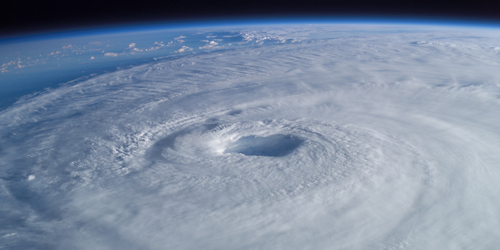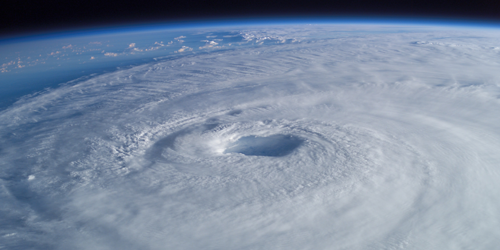Eyeing the Storm
Hurricanes and dust devils often have a central region where the conditions are relatively calm. The formation of such an “eye” is not well understood, as many different meteorological factors contribute. A new numerical study of atmospheric flow patterns has simulated vortices—some with eyes and some without. The researchers identified which factors are most important for determining whether an eye forms.
The eye of an atmospheric vortex is a region near the vortex axis in which air flows downward. Surrounding the eye is a cone-shaped boundary layer, called the “eyewall,” where the winds are concentrated in an upward spiraling corkscrew. In recent numerical work, Emmanuel Dormy from the École Normale Supérieure in Paris and colleagues were able to generate eyes in a simplified atmosphere model, showing how the eyewall is key to shaping the eye.
The team has now performed a more comprehensive study to isolate which inputs lead to eye formation. Their simulated atmosphere is a rotating cylindrical volume in which heat from the bottom causes upward convection flows. Because of the Coriolis effect, these flows spiral around in a vortex pattern. The researchers ran multiple simulations, varying inputs like system size, temperature gradient, air viscosity, and rotation rate. They found that certain factors, such as the ratio of Coriolis forces to inertial forces, needed to be in a particular range for an eye to form. The results could help in forecasting eyes in real storms, but the authors caution that their model leaves out important factors, such as water vapor condensation, turbulence, and vertical stratification of the atmosphere.
This research is published in Physical Review Fluids.
–Michael Schirber
Michael Schirber is a Corresponding Editor for Physics based in Lyon, France.





